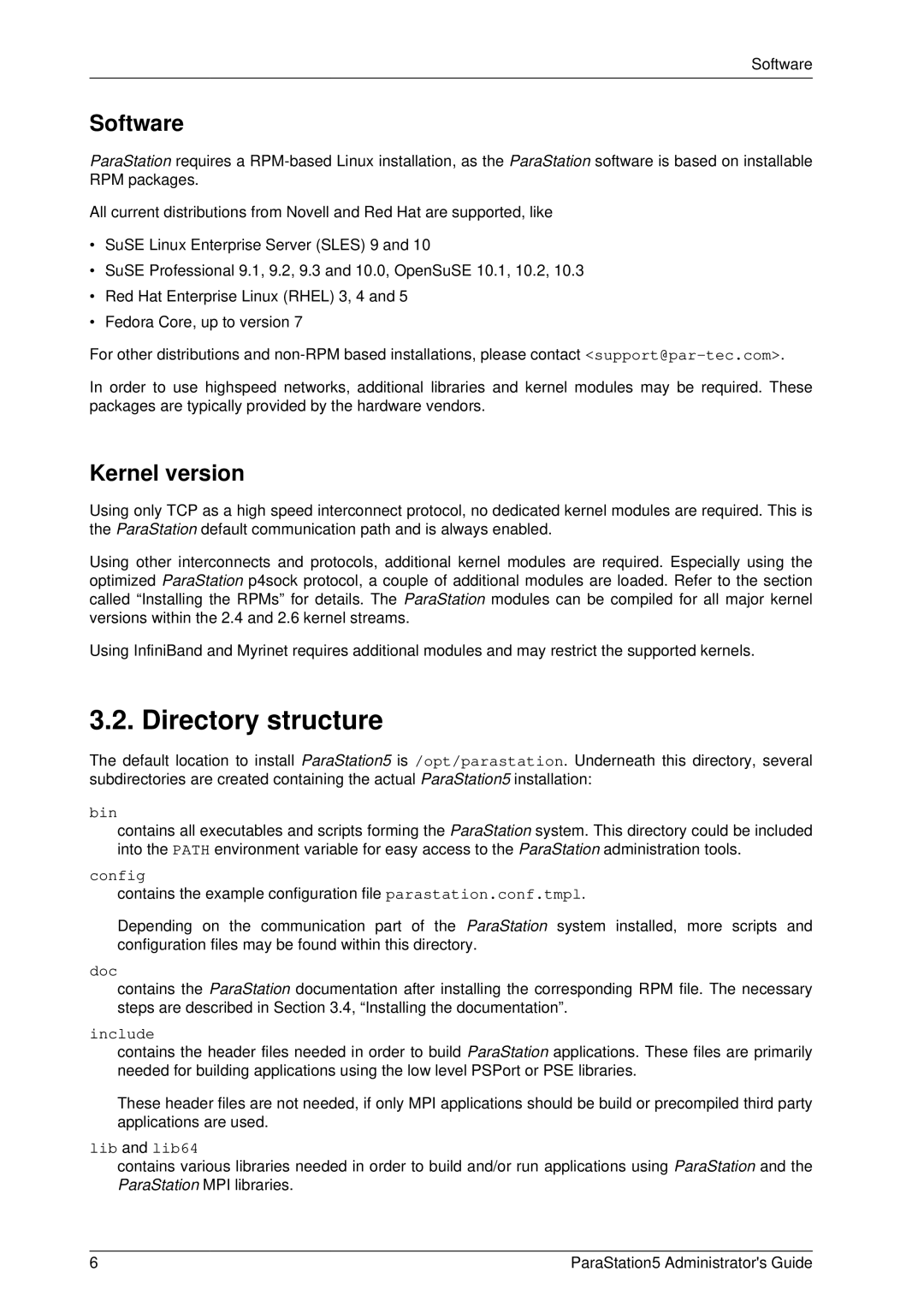
Software
Software
ParaStation requires a
All current distributions from Novell and Red Hat are supported, like
•SuSE Linux Enterprise Server (SLES) 9 and 10
•SuSE Professional 9.1, 9.2, 9.3 and 10.0, OpenSuSE 10.1, 10.2, 10.3
•Red Hat Enterprise Linux (RHEL) 3, 4 and 5
•Fedora Core, up to version 7
For other distributions and
In order to use highspeed networks, additional libraries and kernel modules may be required. These packages are typically provided by the hardware vendors.
Kernel version
Using only TCP as a high speed interconnect protocol, no dedicated kernel modules are required. This is the ParaStation default communication path and is always enabled.
Using other interconnects and protocols, additional kernel modules are required. Especially using the optimized ParaStation p4sock protocol, a couple of additional modules are loaded. Refer to the section called “Installing the RPMs”for details. The ParaStation modules can be compiled for all major kernel versions within the 2.4 and 2.6 kernel streams.
Using InfiniBand and Myrinet requires additional modules and may restrict the supported kernels.
3.2. Directory structure
The default location to install ParaStation5 is /opt/parastation. Underneath this directory, several subdirectories are created containing the actual ParaStation5 installation:
bin
contains all executables and scripts forming the ParaStation system. This directory could be included into the PATH environment variable for easy access to the ParaStation administration tools.
config
contains the example configuration file parastation.conf.tmpl.
Depending on the communication part of the ParaStation system installed, more scripts and configuration files may be found within this directory.
doc
contains the ParaStation documentation after installing the corresponding RPM file. The necessary steps are described in Section 3.4, “Installing the documentation”.
include
contains the header files needed in order to build ParaStation applications. These files are primarily needed for building applications using the low level PSPort or PSE libraries.
These header files are not needed, if only MPI applications should be build or precompiled third party applications are used.
lib and lib64
contains various libraries needed in order to build and/or run applications using ParaStation and the ParaStation MPI libraries.
6 | ParaStation5 Administrator's Guide |
